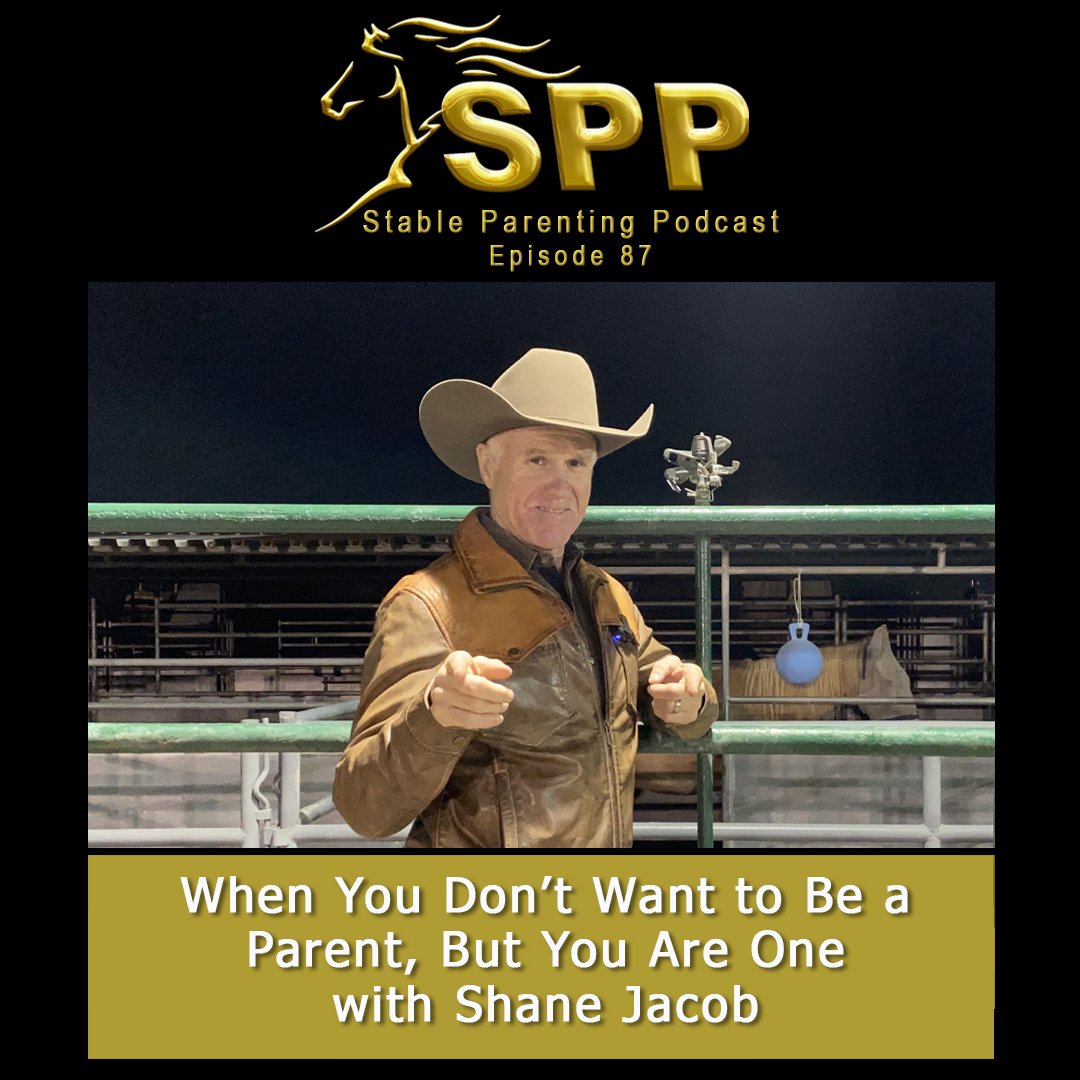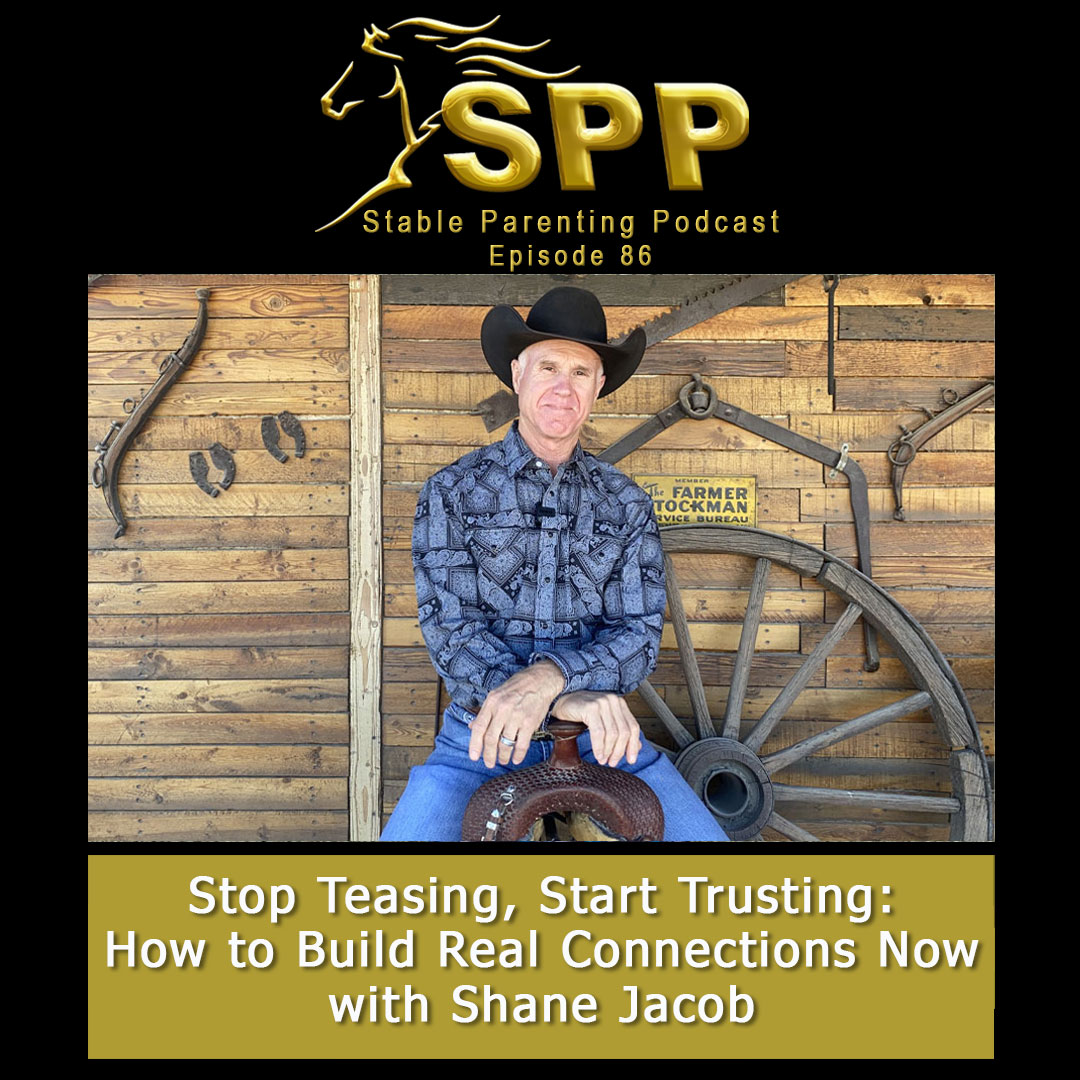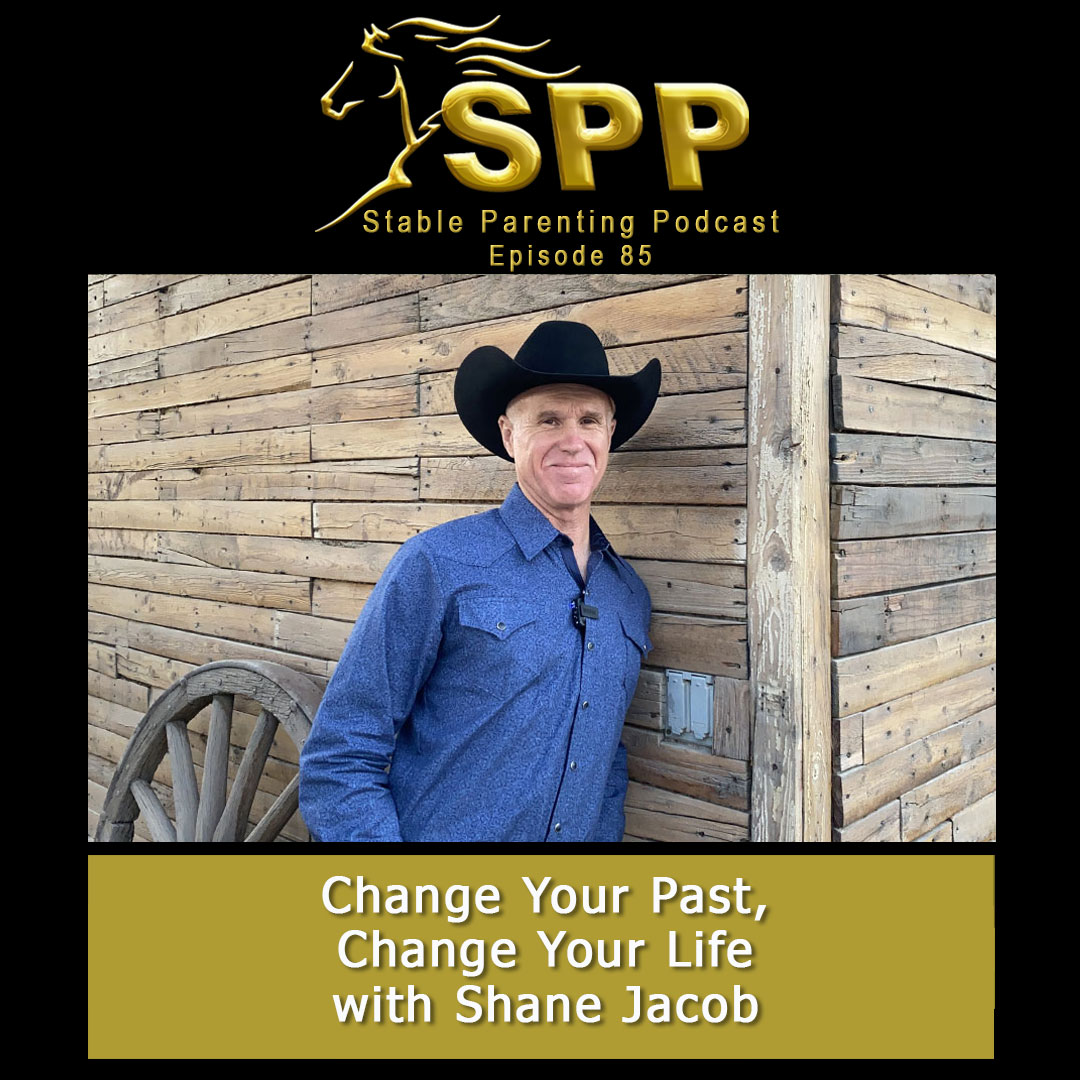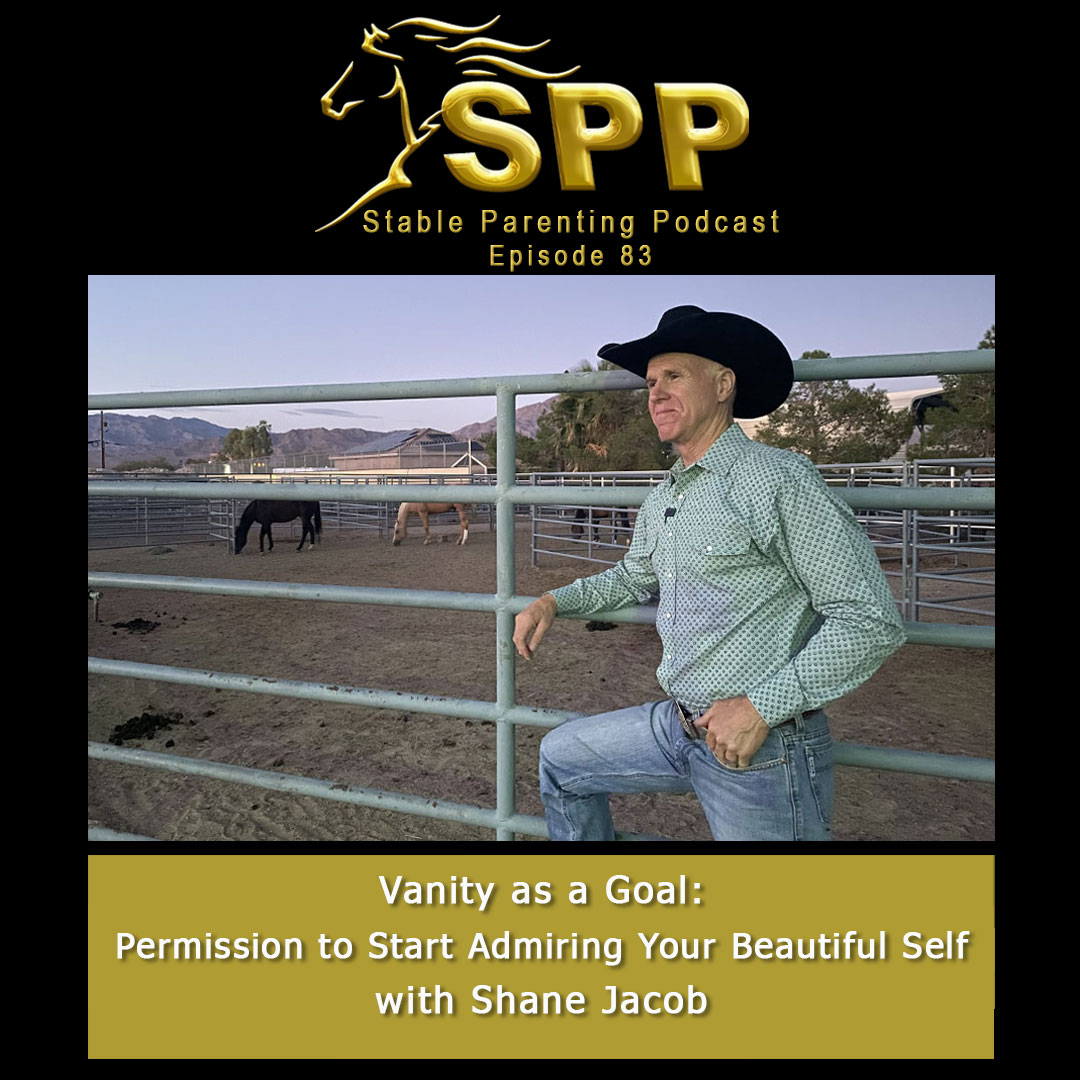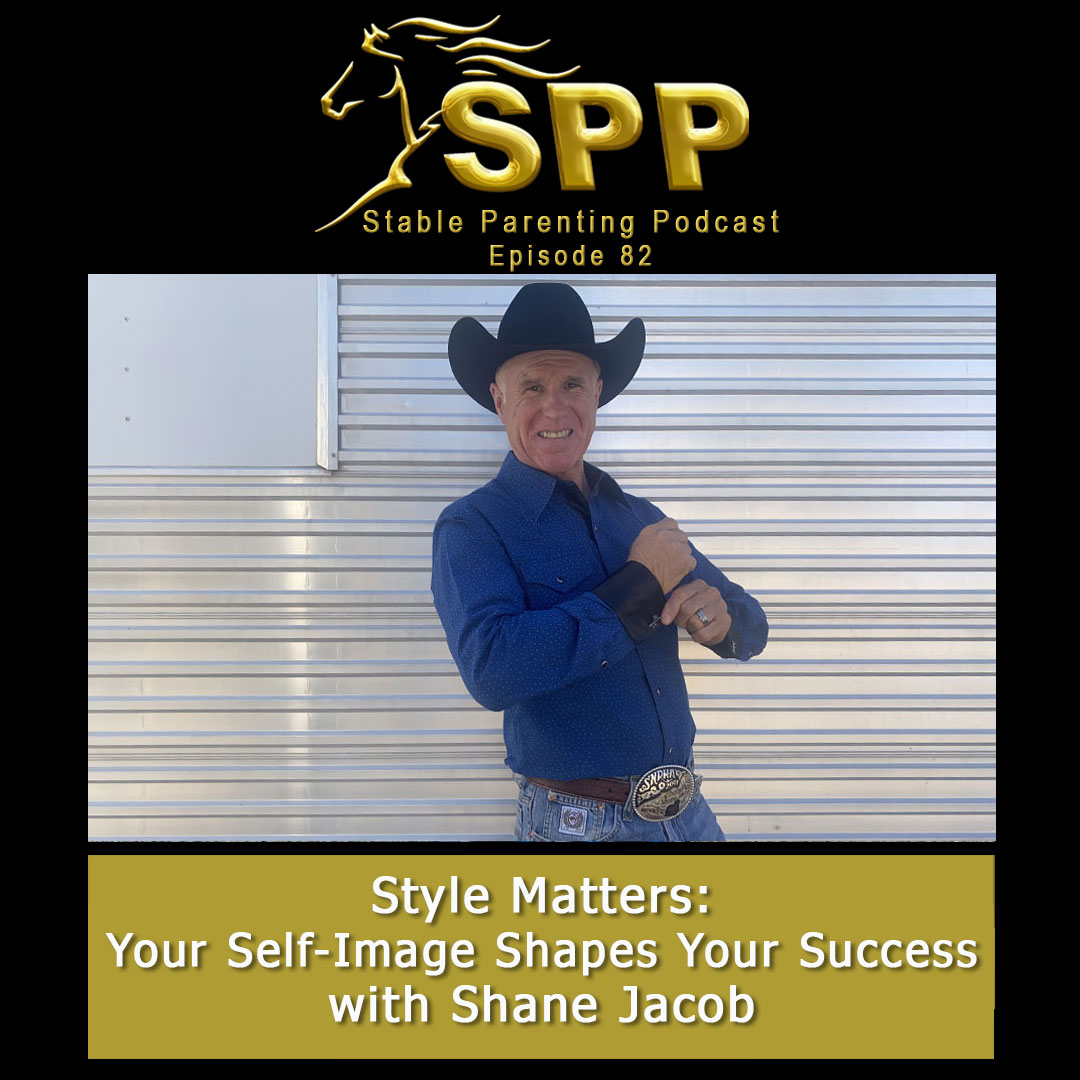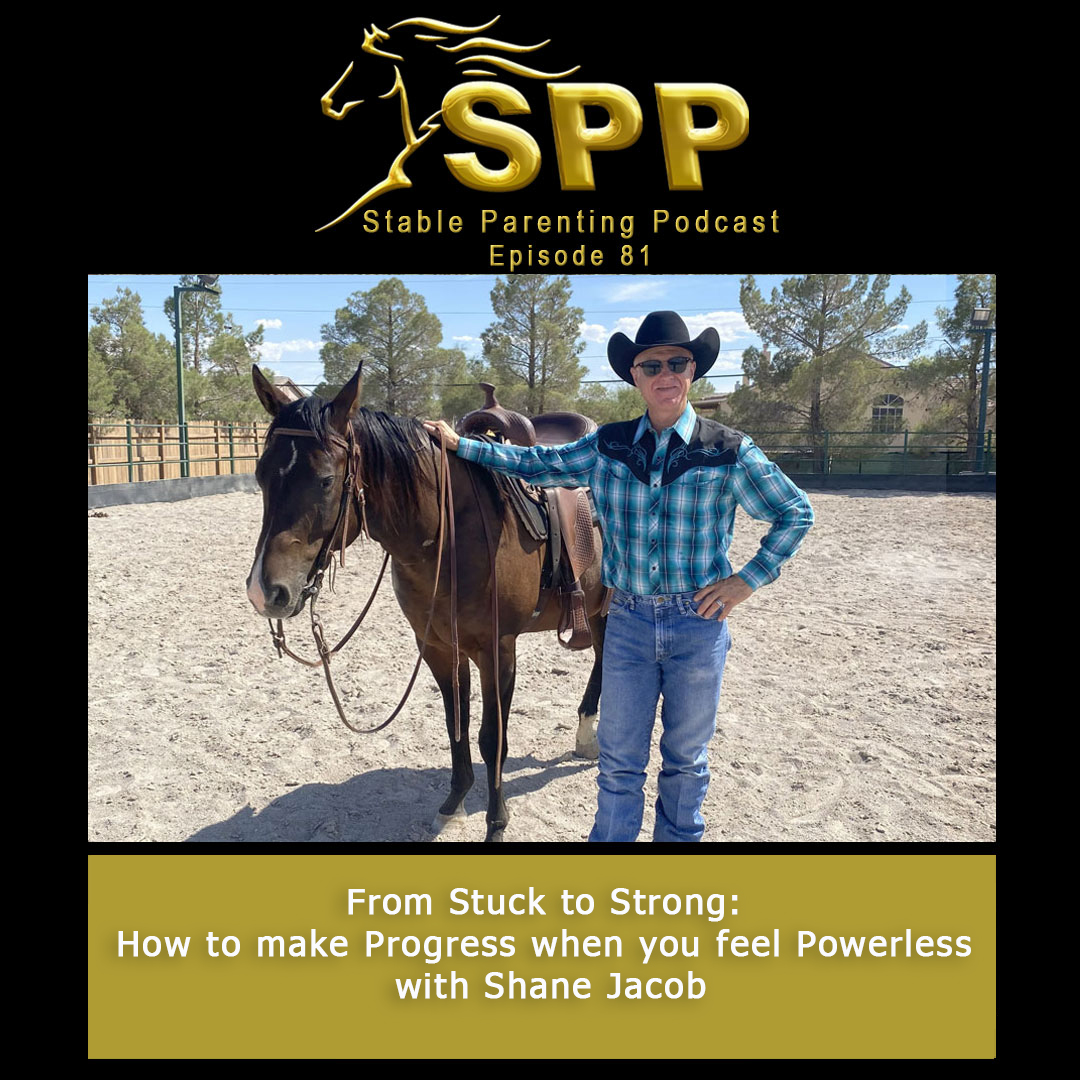Shane shows how clear, loving boundaries with horses mirror what kids need most from their parents.
Welcome to This Week's You Are Destined For Greatness
Welcome to this week's You Are Destined For Greatness, talking about horses and humans like always. Today here with my three-year-old mare, Purdy.
You know, I like to say that nothing, the only thing that matters is everything. Because you know what, I believe that everything matters. It matters.
A lot of times I say that and the reaction I get is people kind of freak. You know, it's like, “Ah, I don't want to do anything, I don't want to do it wrong.” And that's not my message, just so you know. The message is, “Hey, you can only know what you can know, and you can do the best you can with what you have to work with at the time, and that's enough. That's enough, but you can improve on what you know and how well you do it.” And that's why I know you're here with me today.
What We Communicate by Not Communicating
Today, here's the deal. I wanted to talk about one of the things that matter, and that is what we don't communicate by not, what we communicate by not communicating.
Okay, so a lot of times what happens with horses and with people is that, like specifically with kids, with our kids, and really everyone, all other people, we, they do things that we don't want them to do. Okay? They just, they can't get it right. We want them to do things how we want them to do it, and they just don't do it that way.
And a lot of times with our lack of clarity, we're communicating to them that that's okay. Okay?
Clarity and Consequences for Horses and Kids
Now adults get to do what they want. If we don't like what they're doing, we can set boundaries for ourselves. Okay, but with horses and kids, what we need to do is have clarity with our expectations and then have consequences. Loving, unconditional love through it all, not a hard-ass discipline, just loving consequences.
Teaching Expectations During Everyday Tasks
Okay, so we'll see what happens today with this mare. I'm going to bridle her. So I've untied her from the hitching post and I've thrown her lead rope on the ground so she's free to go if she wanted to go, but I don't want her to go.
So I'm going to take her halter off, and I'm going to expect that she's just going to stand there. Now how would she know that? How would she know that I would expect her just to stand there, loose, with the saddle on next to me?
The only reason I would expect her to know that is because in the past I've communicated to her, "Hey, when I take your halter off, please don't move your feet and run away from me." Okay, that's why she's not leaving right now, because otherwise there'd be no way for her to know. Okay.
Communicating Through Small Moments
So I'm going to bridle her. Now, if you've noticed, she's moved her head a couple inches away from me, and I don't want that. So I'm going to communicate to bring her nose back over by me, so I'm not like all stretched out.
She's lifting her head a little bit, but that's okay with me. There she comes. I'm going to ask her to open her mouth, maybe. I'm still asking for her to open her mouth. There we go. Put the bridle in, and I'm going to slide it over her ears. I'm going to adjust the throat latch.
Now, she's coming a little bit close to me and a little bit low. If she gets a little bit closer, I'm going to communicate with her that I'd prefer not to be that close to me.
Previous Conversations Build Better Behavior
Now, there were quite a few little small communications that happened there, but overall that was a pretty smooth bridling for a very green, inexperienced, three-year-old mare. But this isn't the first time she's been haltered. We've had lots of talks before. By talks, I mean communications. Okay?
At the point where she moved, she resisted just a little bit. Now watch, I’m gonna, she's putting her head down and I'm gonna communicate to keep your nose up. Okay?
I don't want her down there putting her nose on that halter that I dropped on the ground. So I'm gonna ask her to keep her, I'm not gonna hold her up, I'm just gonna ask her to bring her head up and keep her head up.
At the point where she resisted me, just a small resistance. Okay? She moved her nose a few, about three or four inches away from me when I brought the bit to her mouth.
At that point, had I done nothing, I would have communicated to her that it's okay to resist the bit. And then over time, that would have built into a potentially, a bad habit. Okay? According to me. Because I want her to have her nose over here where she's easy to bridle.
Why Small Corrections Prevent Big Problems
This example is exactly, precisely what I'm talking about. Because after I've done that a bunch of times and I come up to halter her and she resists me, I'm just mad, I'm like, "I've had it with you. You resist me every time. You're a pain in the ass, you're spoiled, you're not a good horse, you're not cooperative," and all this stuff.
Okay? And why? Why am I thinking all that and feeling all these feelings? Because I have failed to communicate. I have communicated by failing to communicate. And you know how simple it was? I asked her to bring her nose back over here. Okay. So it does matter.
The Lesson for Parenting and Relationships
What does this matter with people? What does it matter with your kids? If they're doing things that aren't acceptable, clarity and intent on what's happening is key. It is key.
If it's an uncomfortable conversation, I'm suggesting that you have it. That you notice when things don't feel good and they're not right, and rather than, if you want to accept it and let it go, there's certain things that this horse can do, and she's been doing them, that are perfectly okay with me. I don't care if she does them or not.
She can have her freedom to do little things if she wants, but there's certain things that I do want her to do. Okay? And she's my responsibility, and so I get to make the decisions as her leader. Okay?
And the same goes for our kids. Really, the bottom line here is, in order to have a strong bond, a solid connection, to have our kids with us, and feel united, we need to be clear with what we want to communicate. And we do that by communicating, not by thinking or assuming that they know what we want. That's the big thing.
And with adults, the same thing is true. Know what we want, don't just accept it and accept it. Then we can set a boundary and say, “Hey, when you do this, I will do this.”
Strong Communication Builds Strong Relationships
And that's the clarity of communication that keeps our relationships as strong as they can be, and that's important because You Are Destined For Greatness.


